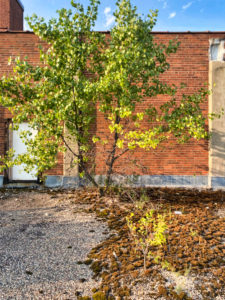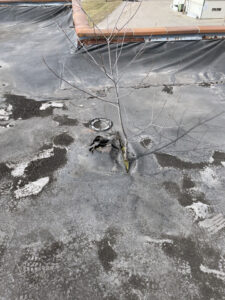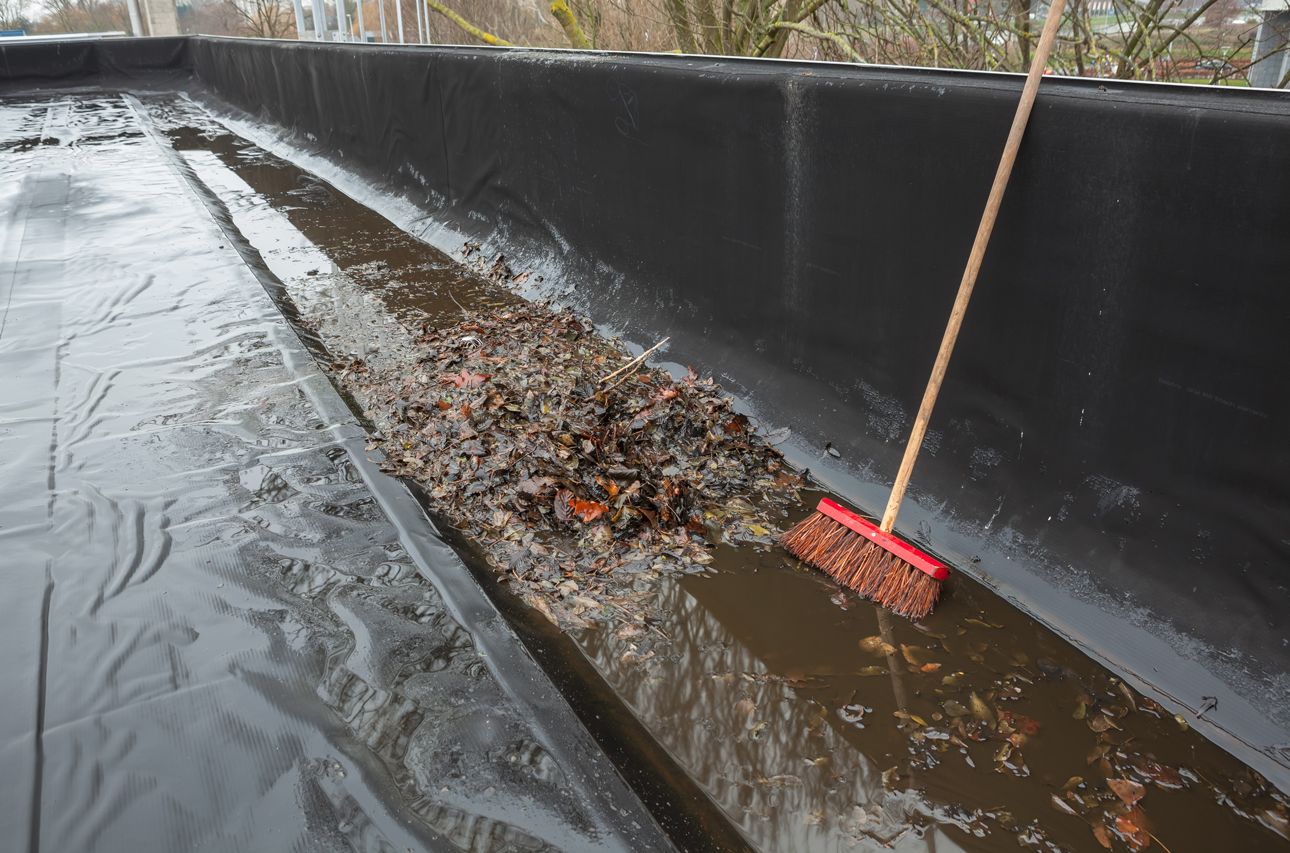It’s finally starting to feel like Spring. Even though we’ve had an unusually mild winter, there’s nothing quite like Spring in Minnesota to lift one’s spirits and put the thoughts of cold weather on the shelf for the next six months. And with Spring weather comes one of our busiest times of the year: Commercial Roof Inspections Season!
We see many different things on roofs after the snow and ice have thawed. Some require immediate attention. Some of them are, well, rather interesting.
In this blog post, we’ll discuss some of the things that our roof inspectors find during their inspections and which ones are a cause for concern.
Why is Springtime such a good time for commercial roof inspections?

There are a few reasons why Spring is an excellent time for commercial roof inspections. For one, the weather is usually milder than during the Summer months. Spring is also a good time for commercial roof inspections as it’s when many problems tend to first appear.
During the winter, snow, and ice can not only cause roof damage but can also hide certain damage and defects in the roofing material. Once melted, the damage becomes exposed. This can result in leaks that cause costly damage to your building and its contents. If you wait until the Summer to have your roof inspected, you may not be able to catch all the problems that need to be fixed before the rainy season.
What sorts of things do our roofers find when performing Spring commercial roof inspections?
SIGNS OF UNUSUAL OR EXCESSIVE WEAR
A common problem that our roof inspectors find is worn-out or weakened roofing material. Roofing membranes, seals, and flashings wear out over time and, if not repaired or replaced promptly, can lead to more serious problems down the road. Winter is especially hard on flat commercial roofs, and this is the time to find out how well they survived.
BUILDUP OF DEBRIS AND DRAIN BLOCKAGE
Debris and leaves can often build up on the roof over time, leading to drainage problems. Springtime often reveals areas of your roof covered in wet leaves leftover from the previous fall. If they are blocking any part of the drainage system and water isn’t able to drain correctly, it can cause damage to the underlying structure and create a breeding ground for mosquitoes and other pests.
WATER INFILTRATION AROUND VENTS OR OTHER ROOF PENETRATIONS
Water infiltration around vents or other roof penetrations is another common problem our inspectors discover during Spring inspections. As discussed in previous blogs, this can be caused by many things. There may already be signs of leaks inside the building. These issues require immediate repair before Spring and Summer’s heavy rains start.
LEAKS
Leaks are one of the main issues roof inspectors are looking for during their inspections. They often find leaks that may have been going on for months or even years without being noticed. This can be a huge concern, as leaks can cause severe damage to your building’s interior.
POOLING WATER
Pooling water is another concern that our roofers will frequently encounter during their springtime inspections. Pooling water can be a sign of a leaky roof, and it can also lead to the growth of mold and other pests. If you see pooling water on your roof, make sure to have it fixed right away.
INTERIOR WATER DAMAGE
When roof inspectors find signs of water damage inside the building, it’s always a sign that trouble is present. Water damage can cause extensive damage to the inside of your business, so it’s important to get it fixed as soon as possible. Insulation, drywall, and ceiling tiles tend to hold water, masking minor roof leaks, so they may not be evident in a casual walk-through.
MOSS OR ALGAE GROWTH
Moss or algae growth is another problem that our roofers often find during their inspections. Moss and algae typically occur on the roof, not in the building’s interior. This can be a sign that there is something wrong with your roof’s drainage system preventing water from exiting the roof.
MOLD, MILDEW, AND FUNGUS
Mold and mildew are other common problems that our roofers discover during Spring commercial roof inspections. Mold can grow in any environment with high moisture levels and can be harmful to your health. Both can be hidden in interior building materials or along exterior walls that have absorbed water from minor leaks. As we’ve often said, small leaks eventually turn into big leaks.
Damp, dark areas are also a breeding ground for fungus and can appear as mushrooms or shelf-like growths. They can be a sign of a roof leak or a foundation leak caused by seepage from poor drainage.
SIGNS OF INSECTS AND ANIMALS
Another issue that our roofers often find during Spring inspections is signs of insects and animals. Both can cause serious damage to the roofing material, so it’s essential to get them removed as soon as possible. Rodents can be especially destructive as they look for ways to get inside your warm building during the winter months. If they can’t find an entry point, they’ll make their own, making a perfect way for future rainwater to get inside your building.
BEER CANS, CIGARETTE BUTTS, AND MUCH, MUCH MORE!
You might be surprised by what sorts of things we find on our clients’ roofs. Magazines, orthodontic retainers, bicycles, car tires, bags of garbage, iPods, unmentionables—we’ve seen it all! If your tenants or employees have access to your roof, they may be accessing it more than you realize. But as long as we’re up on your roof inspecting it, we’ll check to see if there have been any dance parties that may have caused damage. Whose mirror ball is this?
What can you do to prevent springtime issues with your commercial roof?
There are a few things that you can do to prevent these common discoveries from causing issues with your commercial roof. The simplest solution is to schedule a Spring inspection and fix any problems as soon as they are found.
Next, sign up for a preventative maintenance program with a reputable commercial roofing maintenance partner like Mint Roofing.
If you’re already experiencing problems with your roof, don’t wait until it’s too late to fix it. Contact us right away to have us take a look at it. It may require repair, and the sooner you fix it, the less damage it will do in the long run.
If you’re looking for a reliable commercial roofing contractor, contact our team today. We’d be happy to help you keep your roof in tip-top shape.
FAQs
Q: What is the best time to get a commercial roof inspection?
A: The best time to get a commercial roof inspection is during springtime or fall when the weather is mild and before any major storms.
Q: How long does a typical commercial roof inspection take?
A: The duration of a commercial roof inspection varies depending on the size and complexity of the roof. It typically takes anywhere from a few hours to a full day.
Q: What are some common problems found during commercial roof inspections?
A: Some common problems found during commercial roof inspections include leaks, cracks, ponding water, blistering, punctures, and vegetation growth.
Q: How often should I have my commercial roof inspected?
A: It’s recommended to have a commercial roof inspected at least once a year – either in the spring or in the fall. However, if you’ve experienced severe weather, you may need an additional inspection.
Q: Can a commercial roof inspection help prevent major repairs down the line?
A: Yes, regular commercial roof inspections can help detect minor problems before they become major issues, saving you money on costly repairs in the long run.


